2016 Smart Fortwo Review: Tiny Car, Redux
- Tiny footprint ideal for packed city driving
- Advertised fuel efficiency is competitive
- Improved power and interior room versus previous model
- Rough drivetrain at idle
- Electrical gremlins interfered with climate and stereo controls
- No back seat, small cargo area
- Larger, more practical options are similarly priced
What a difference a year can make. Roughly 365 days ago I found myself behind the wheel of the 2016 Smart Fortwo for the very first time on the streets of Portland, Oregon, where I spent the day tooling around in the very latest version of the automaker's ultra-subcompact coupe. This past month, I had the opportunity to once again sample the Fortwo, only this time I had a full seven days to put the car through its paces and match it up with my daily routine. Surprisingly, the difference between those two experiences was substantial enough to change my perception of the car.
Smart's corporate parent, Mercedes-Benz, listened to a lot of the feedback that it got about the previous generation Fortwo and make a concerted effort to adapt the new version of the vehicle to the North American market. The two biggest changes? More power, and a slightly wider platform that has created a cabin that better accommodates two riders (and introduces a little more stability at highway speeds).
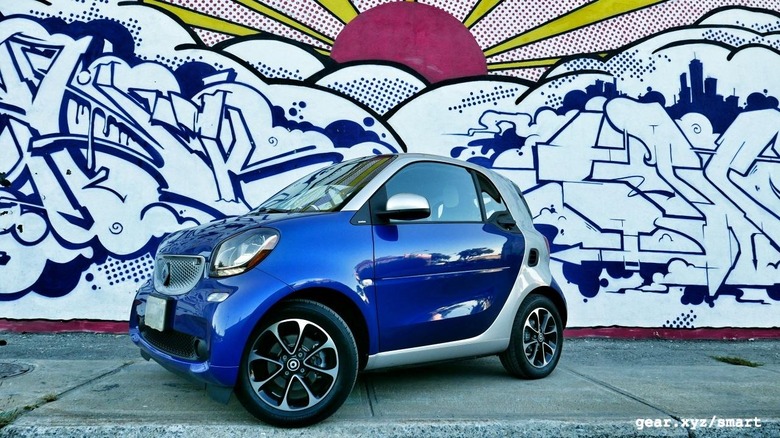
Gone is the 70 horsepower three-cylinder engine offered by the older version of the Fortwo, and in its place is a slightly smaller (just under one liter) three-banger that adds a turbocharger to the mix. The end result is 19 more ponies and a whopping 42 additional lb-ft of torque (for a total of 100 lb-ft), which gives the Smart a leg-up over its predecessor in a straight line. Even better: a true dual-clutch automated manual gearbox is on offer alongside a five-speed manual transmission to replace the lamented 'semi-automatic' setup that was previously the only option for the vehicle.
Before you start ordering racing numbers for your Smart Fortwo, it's important to understand that while the car is much better equipped to deal with modern traffic, it's still one of the most leisurely performers in its class, offering a 10-second jog to 60-mph. That's fine around town, where I didn't really notice the turbo running out of breath from one stoplight to the next, but there were a few heart-stopping moments out on the highway when I realized I had misjudged the amount of runway required to merge the coupe with fast-moving traffic.
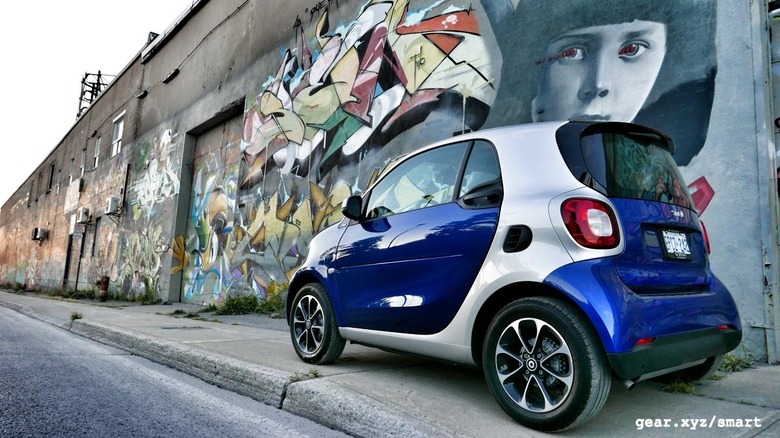
By the end of the week I had reprogrammed right foot accordingly, but it's a reminder that the Smart is not your typical runabout. The Fortwo is a city car, meant to ply boulevards rather than tackle inter-urban travel. Indeed, if I was going to penalize the new drivetrain it would be for its rough character and not its lack of grunt. The Smart's three-cylinder turbo would often shudder while idling at a stop sign, followed up by a disgruntled shake as I got on the throttle to ease forward.
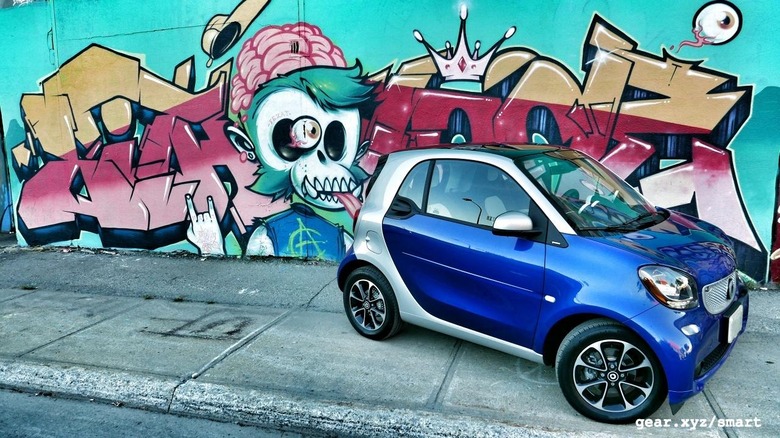
I don't think the dual-clutch transmission in my tester is entirely to blame here – much of the harshness occurred when the Fortwo wasn't moving at all, and I never noticed a problem when cruising at a steady speed – but it was distinctly different from my memories of how the car drove at the launch. I also had trouble matching the car's 36-mpg combined fuel economy rating, as my stop-and-go-intensive driving returned 24-mpg total. Taken together, this behavior makes me wonder if whoever had filled the car before it got to me had neglected to specify premium fuel, as is required for maximum power and efficiency.
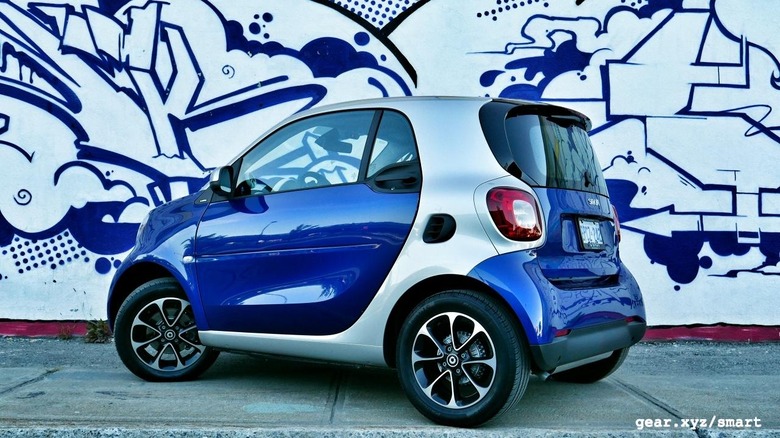
The larger footprint of the 2016 Smart Fortwo has been accompanied by a restyling effort that makes the car seem visually more substantial as well, especially from the front where a new fascia broadens the vehicle's appearance. Although the overall length of the coupe is the same as that of the older model, the extra interior width is welcome, and the cabin's enormous butterfly doors create ingress and egress points that welcome even taller occupants. Pleasantly colored plastics and modest amounts of available leather remind you that you are driving a price-driven vehicle, but aside from the integrated smart phone mount that blocks some of the stereo system's control surfaces, it's very straightforward to interact with the Fortwo's limited feature set.
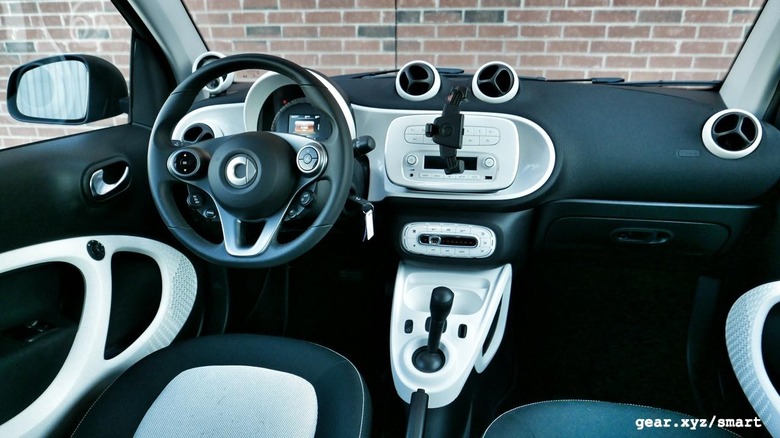
That phone perch is there to make it easier for you to integrate your device with the Smart Connect app, which steps in as a replacement for a traditional LCD infotainment system (which you cannot order with the car). The last time I used Smart Connect it was in beta, but I encountered far more troubling issues with the Fortwo's stereo during our week together. In fact, both the radio and the car's heating and cooling system would often refuse to work for me after I had fired up the ignition, requiring me to turn the car on and off to 'reboot' so to speak and get the air and tunes flowing again. Mercedes-Benz told me that it would be sending my tester in for maintenance once I returned it, but I was surprised to encounter this issue on a low-mileage car.
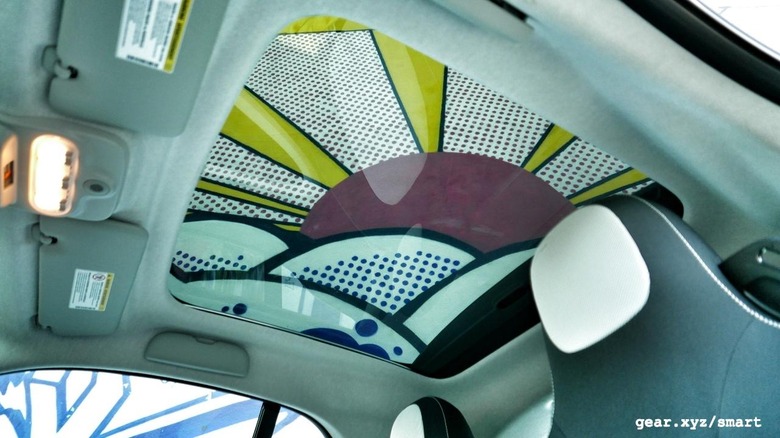
Looking past the electrical gremlins and grumbling engine, the 2016 Smart Fortwo is a decent package for a very specific customer. Ranging in price between roughly $15,000 and $19,000, the Fortwo isn't the cheapest option amongst subcompacts, and it's certainly the least spacious, as there's no backseat and the cargo compartment, while easy to access via the split tailgate, is the definition of abbreviated. That being said, its tiny stature gives it a certain cachet for anyone forced to deal with densely-packed streets and non-existent parking opportunities, because the Smart's ability to navigate through tight spaces and squeeze into narrow gaps is unmatched.
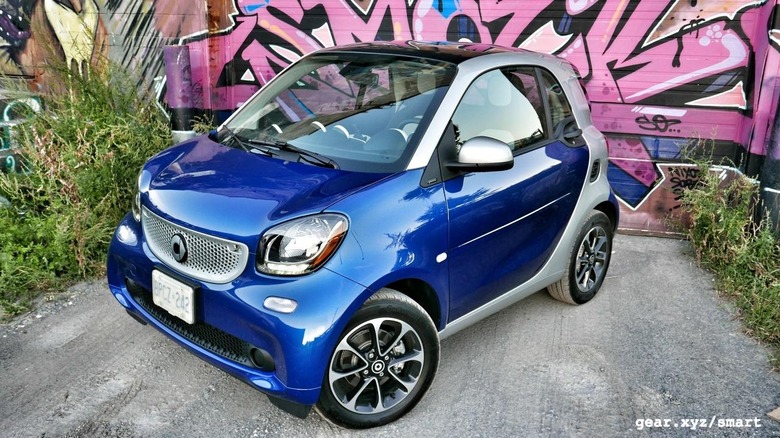
Still, it's hard to see the Smart Fortwo as anything other than a second car or urban accessory, as its design simply doesn't mesh well with long-distance travel. You can't quite drive the coupe into the service elevator of your building and then park it outside on the balcony beside your mountain bike, but sometimes it certainly feels like it. If you wouldn't be caught dead on a scooter, and like the quirky and admittedly appealing styling, then the Fortwo might be right-sized to fill the occasional transportation hole in your lifestyle.
